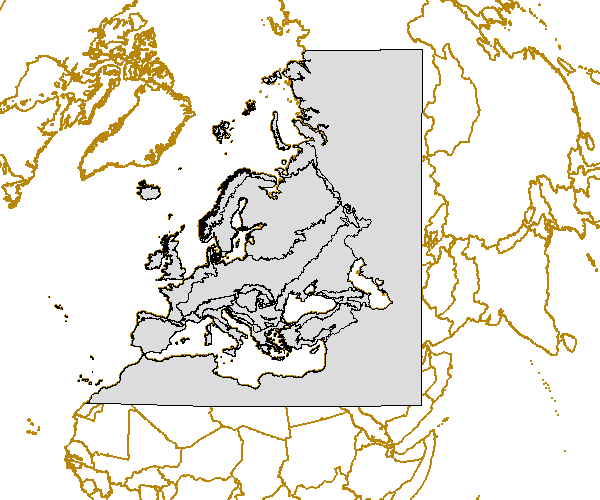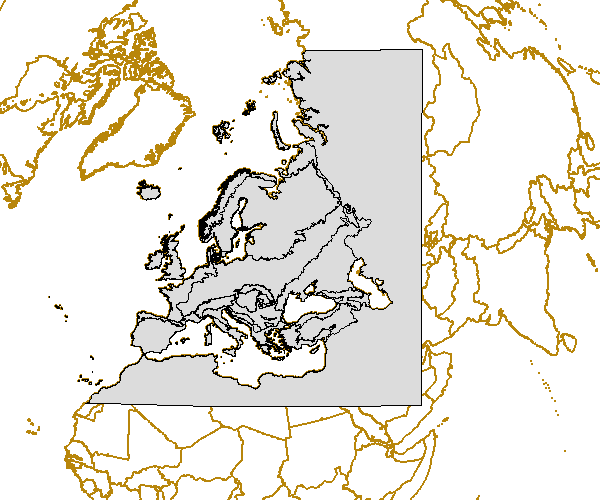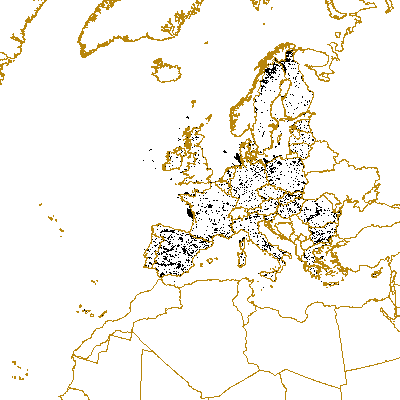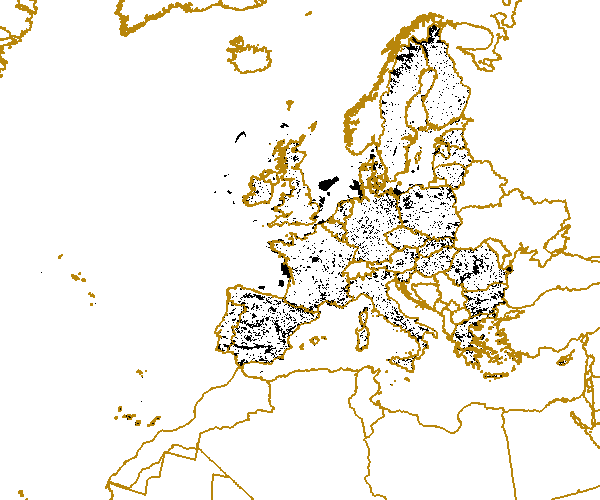biodiversity
Type of resources
Available actions
Topics
INSPIRE themes
Keywords
Contact for the resource
Provided by
Years
Formats
Representation types
Update frequencies
status
Scale
Resolution
-

The biogeographical regions dataset contains the official delineations used in the Habitats Directive (92/43/EEC) and for the EMERALD Network set up under the Convention on the Conservation of European Wildlife and Natural Habitats (Bern Convention).
-

The biogeographical regions dataset contains the official delineations used in the Habitats Directive (92/43/EEC) and for the EMERALD Network set up under the Convention on the Conservation of European Wildlife and Natural Habitats (Bern Convention). The structure of the attribute table has been changed in this revised version. The mapping from old field names to new ones is as follows: NAME -> short_name ABBRE -> pre_2012 code -> code label -> name
-

This dataset was built from the original Natura 2000 vector. The raster grid is aligned with the EEA reference grid GeoTIFFs generated by GRASS, according to the GeoTIFF Revision 1.0 specifications at http://www.remotesensing.org/geotiff/spec/geotiffhome.html. The information displays if there is or not Natura 2000 sites under each specific pixel zone.
-

Natura 2000 is the key instrument to protect biodiversity in the European Union. It is an ecological network of protected areas, set up to ensure the survival of Europe's most valuable species and habitats. Natura 2000 is based on the 1979 Bird's Directive and the 1992 Habitat's Directive. The green infrastructure it provides safeguards numerous ecosystem services and ensures that Europe's natural systems remain healthy and resilient. Natura 2000 is an ecological network composed of sites designated under the Birds Directive (Special Protection Areas, SPAs) and the Habitats Directive (Sites of Community Importance, SCIs, and Special Areas of Conservation, SACs). For each Natura 2000 site, national authorities have submitted a standard data form (SDF) that contains an extensive description of the site and its ecology. The European Topic Centre for Biological Diversity (ETC/BD), based in Paris, is responsible for validating this data and creating an EU wide descriptive database. The European database on Natura 2000 sites consists of data submitted by Member States to the European Commission. This data is subject to a regular validation and updating process. After validation a new EU-wide Natura 2000 database is released. The date of release of a new EU-wide database does not guarantee that the data has been regularly and uniformly updated by Member States. The spatial data (borders of sites) submitted by each Member State is validated by the European Environment Agency (EEA) and linked to the descriptive data. Any problems identified during this process are brought to the attention of the concerned Member States. There are specific terms and conditions relating to the use of downloaded boundary data within the United Kingdom. If you intend to use the UK data you must first agree to the end user licence http://www.jncc.gov.uk/page-5232. Please note that some Member States have submitted sensitive information that has been filtered out of this database. The following Member States have submitted sensitive information: Austria, Bulgaria, Cyprus, Czech Republic, Finland, Germany, Ireland, Latvia, Luxembourg, Malta, Romania, Slovakia, Sweden and United Kingdom. This concerns mainly species associated to specific sites. All reference to these species has been removed from the related sites. Certain descriptive fields, possibly mentioning the presence of these species, have also been removed. If this sensitive information is necessary to your field of research, please contact the Member States' administrations individually. You can find a compiled list of national or regional Natura 2000 websites at the following address: http://ec.europa.eu/environment/nature/natura2000/db_gis/index_en.htm#sites
-

This dataset was built from the original Natura 2000 vector. The raster grid is aligned with the EEA reference grid GeoTIFFs generated by GRASS, according to the GeoTIFF Revision 1.0 specifications at http://www.remotesensing.org/geotiff/spec/geotiffhome.html. The information displays if there is or not Natura 2000 sites under each specific pixel zone.
-

This dataset was built from the original Natura 2000 vector. The raster grid is aligned with the EEA reference grid GeoTIFFs generated by GRASS, according to the GeoTIFF Revision 1.0 specifications at http://www.remotesensing.org/geotiff/spec/geotiffhome.html. The information displays if there is or not Natura 2000 sites under each specific pixel zone.
-

This dataset was built from the original Natura 2000 vector. The raster grid is aligned with the EEA reference grid GeoTIFFs generated by GRASS, according to the GeoTIFF Revision 1.0 specifications at http://www.remotesensing.org/geotiff/spec/geotiffhome.html. The information displays if there is or not Natura 2000 sites under each specific pixel zone.
-

This dataset was built from the original Natura 2000 vector. The raster grid is aligned with the EEA reference grid GeoTIFFs generated by GRASS, according to the GeoTIFF Revision 1.0 specifications at http://www.remotesensing.org/geotiff/spec/geotiffhome.html. The information displays if there is or not Natura 2000 sites under each specific pixel zone.
-

Natura 2000 is the key instrument to protect biodiversity in the European Union. It is an ecological network of protected areas, set up to ensure the survival of Europe's most valuable species and habitats. Natura 2000 is based on the 1979 Bird's Directive and the 1992 Habitat's Directive. The green infrastructure it provides safeguards numerous ecosystem services and ensures that Europe's natural systems remain healthy and resilient.
-

This dataset was built from the original Natura 2000 vector. The raster grid is aligned with the EEA reference grid GeoTIFFs generated by GRASS, according to the GeoTIFF Revision 1.0 specifications at http://www.remotesensing.org/geotiff/spec/geotiffhome.html. The information displays if there is or not Natura 2000 sites under each specific pixel zone.
 RUC Geo-Data catalogue
RUC Geo-Data catalogue